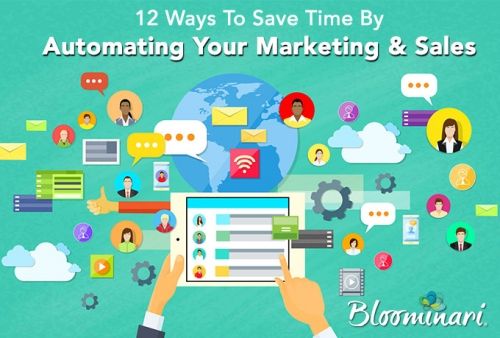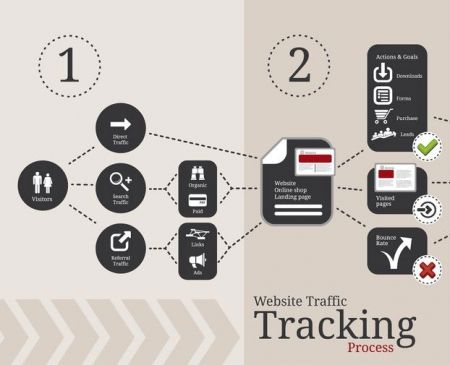We love technology in the same way we're passionate about creativity. Stay tuned for upcoming tech trends that will ultimately affect our future.

The history of mankind has shown us that we as humans are constantly on the lookout for finding ways to make our life easier. This started a long time ago, when man had the need to stay warm and not suffer during cold nights and colder winters, thus man learned how to create fire, and create clothing to stay warm.
Today, the same concept is alive as we’re constantly looking for ways to make our life easier. For example, trying to get places faster (Uber), avoid things we dislike to eat (Checking Yelp), connecting more often with the people we like (Social Media), getting the best value for our money (Amazon, Walmart), and the list goes on.
When it comes down to business, we’re also trying to make our businesses run smoother, more efficient, hiring the correct team members, etc. Yet, many things come down to finding ways to save time and money, because time = money.
I’m always looking for ways to save time, and work more efficiently. So here’s a few ways that you can save time on your daily marketing and sales business tasks.
How to save time on your sales and marketing tasks

As of 2015, the Internet has become a virtually inexhaustible source of information. Choosing relevant topics to share with audience boasts our position as experts and makes us an integral part of the conversation.
But there is a lot to do in order to fulfill this role successfully: browsing for current, relevant and reliable information, organizing it in logical fashion, and distributing it through our social media channels.
This can all be summed up in a process called Content Curation, which entails:
1. Identifying
Finding out which topics pique our audience´s interest and investigating and gathering relevant sources of information.
2. Filtering
Evaluating and choosing relevant titles to share in accordance to our editorial line and the audience´s interests.
3. Distributing
Spreading the end result through our channels.
Clearly, this is A LOT of work…. Content curating tools were invented to automatize and ease this task.
Here are some you may want to try:

What are Campaign URLs, anyway?
If you’ve ever clicked a link, then noticed a string of text at the end of it that begins with a ? and ends with a jumble of text — maybe something that looks like www.examplepage.com/?utm_source=facebook&utm_medium=post&utm_campaign=organicsocialmedia — you’ve stumbled across a campaign URL!
But what is a campaign URL, exactly, and why should you use one?
Online Marketing 101
Online marketing is all about sending visitors to your website from various traffic sources and encouraging those visitors to take action.
The action will be different depending on your small business; some examples include calling your brick-and-mortar location, signing up for your email list, downloading a special coupon or eBook.

There are lots of free apps and web tools out there that cater to creatives. Some of them are absolutely great. Others are total duds.
To save you some time (and frustration) I have put together a short list of great tools we use.
Give them all a try and hopefully some (or all of them) give you a leg up in your next project.
- Niice - Mood boards to help spark your creativity
- Wave - Free accounting and payroll software for small businesses
- Unsplash - Royalty-free high-quality photographs
- Invision - Preview your UX/UI designs as live websites or mobile apps

Have you ever wondered why you don’t see every single post from your Facebook Friends or the Pages you’ve Liked? Or why your company’s posts aren’t seen by everyone who’s liked the page?
Social networks, by the numbers…
The average 18–49-year-old Facebook user has at least 200 Facebook friends. And, as a whole, the average Facebook user creates 90 posts per month, which works out to an average of 3 posts per day.
Facebook doesn’t use a chronological timeline, in which you see every single post from every Friend. If they did, though, perhaps we could conclude that the average user would have to sift through 600 posts per day!
In comparison, the majority of Twitter users are following less than 50 people. However, the Twitter user creates an average of 4.422 tweets per day or 132.66 tweets per month.
Twitter does use a chronological timeline. However, the math works out to be an average maximum of 221.1 posts per day, fewer than the average daily Facebook feed.
What is Facebook’s algorithm, anyway?
Facebook uses a proprietary algorithm to determine what posts show up in your News Feed. This is intended to provide a better experience for the user; after all, 600 posts per day is a lot!
The algorithm is constantly being updated; fortunately for us, Buffer is keeping track of all of the relevant changes!
What does Facebook’s algorithm love?
First, here are four key factors that make it more likely for the algorithm to show you a post:

Smartphones are everywhere, and as time goes by the number of new mobile phone apps grows exponentially. As new and more useful mobile apps appear on the market, businesses and individuals are now using their smartphones more than ever before.
There are now more tasks that people can complete today with their phone than ever before - such as E-mail, banking, editing documents, creating invoices, etc. People can now take their work wherever they are without having to sit down on full-size computer.
If you’re a small business owner, you might ask yourself the question: “Should I build a regular website and/or build a mobile app”?
The answer to this important business and marketing question depends on the type of business you have, what your online goals are, and of course your time frame and budget.
Developing Websites vs. Mobile Apps
Definitions and Background Details
In order to decide what’s the best option for your business, let’s first explore what the differences are.
Websites:
A website is a portal on the world wide web (www) that can be accessed from anywhere around the world through a web browser. Today, both computers and smartphones have web browsers, Any device that's connected to the Internet can access the site.
Today’s modern website may be developed in order to be “Responsive”, which means that the layout, size and content of a web page will adapt and change based on the size of the screen it is being viewed at. Visitors will have the best possible user experience on your website regardless of where he/she is accessing it.
Example: Let’s say a person sees a responsive website in full screen and it contains 3 columns of content, which looks good on a normal screen. When the same site is accessed on a mobile phone, those 3 columns will show up stacked on top of each other (instead of next to each other as columns), so that the user can clearly read the contents of each column. Yet, if that same website was “non-responsive” and the user accessed it through a smartphone, the user would see 3 tiny columns on the screen (same layout as the normal screen), which he probably wouldn’t be able to read in his tiny phone screen. In that case, the user would have to zoom-in (pinch the screen) to see each column in detail - which diminishers a positive user experience on the site.
To some degree, today’s responsive websites actually look very similar to mobile apps - when accessed on smartphone - without actually being one. This is a key point to consider when evaluating this as an option.
Mobile Apps
Mobile apps (or Applications) are basically software developed for your mobile phone, including smartphones - which today are more like mini-computers with calling capabilities using one of the built-in Apps used to make phone calls.
Types of Mobile Apps
There are three types of apps: Native, Hybrid and HTML5/Javascript.

You can use social media marketing to connect with your customers, help new customers find your business, and build relationships! Since many small business owners and employees are familiar with at least one social media network, it can be easy to get started. Facebook, Twitter, Google+, and LinkedIn all offer free accounts and Pages for businesses, too, so there’s no up-front monetary expense.
Managing social media, though, especially if your company has Pages on multiple networks, can be time-intensive. And when you’re running a small business, your time might be better spent serving customers, keeping track of finances, and managing employees.
Should you make the jump?
Five reasons to use social media tools
- You can see feeds from all of your social media channels in one place. Jumping back and forth from site to site can be a big part of the social media time suck. If this sounds like a typical day for you online, consider trying out a tool that has this feature.
- You can post to any combination of your social media channels. Similarly, many social media tools make the updating process faster. You don’t have to post to every channel every time, too - pick and choose which ones get updated each time. You’ll save time and effort.
- It makes it easier for someone else to step in. Once you’ve set up a social media tool with all of your accounts, it’s easy to share access with a co-worker. If you’re sick or away, share just one login with your co-worker instead of five!
- You can learn more about your social media performance. Many tools offer analytics and reporting. You won’t need to go to yet another site to see which links get clicked on, what content gets shared, and how often people are talking to or about you. This gives you instant feedback on what’s working, enabling you to do more of that! You can even share the report with co-workers, too.
- You can check and update your social media channels anywhere. Switching from social media site to site is a pain on your computer, but it can be twice as annoying on a smartphone! While all of the major social media networks now have their own apps, you can save time by checking your social media tool’s single app while you’re on the go. This makes it easy to check in if something’s getting a lot of activity.
